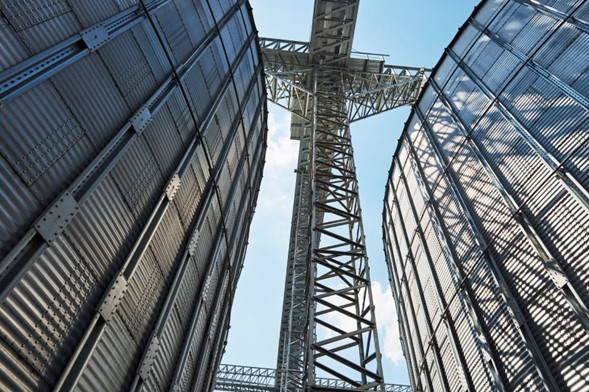Steel Structural Integrity: Understanding Key Components
- June 2, 2024
- Posted by: Velosi Author
- Categories: Civil, Insights, NDT

Have you ever wondered how tall buildings and bridges stay strong and safe? This is possible with steel structural integrity. We all know that Steel is powerful and can be used for making buildings and bridges. It ensures building stability that plays a pivotal role in regulating the proper workflow and business management in the oil and gas industry.
Let us unlock the secrets of steel structural integrity and the critical role it plays in constructing rigid and robust monuments of the petroleum industry. We will also delve into new ways to make connections and details better.
Unlocking the Secrets of Steel Structural Integrity
Steel is the best material for strong and long-lasting buildings especially in the oil and gas industry and production plants. You might wonder, what do engineers do to make sure steel structures are strong and stable?
Understanding Structural Integrity
Structural integrity refers to how well a building can stay strong and keep its shape when it’s carrying weight for a long time. It includes different aspects including how materials work, how things are designed, how they are built, and how they are taken care of. No doubt, Steel is strong and not too heavy therefore, it can be used for different mediums including buildings and roads.
The fact that makes steel the best choice is that it offers exceptional strength and durability, though it is expensive, susceptible to corrosion, and weight can be its limiting factor in certain applications. However, it remains a prevalent choice for construction and manufacturing due to its reliability.
Key Factors Influencing Steel Structural Integrity
- Material Quality: Steel quality is very important for making sure buildings are strong and safe. Top-quality steel with the same characteristics and few flaws is important for the best results.
- Design Considerations: Design is important for steel buildings. It needs to be done carefully to make sure it can handle heavy weights and different weather. It needs to follow rules and guidelines to be safe.
- Building methods: Making sure to accurately build, join, and put together steel parts is very important in making them strong and last a long time.
- Maintenance Practices: It’s important to check, fix, and protect steel regularly to keep it strong and sturdy for a long time.
Advanced Techniques for Ensuring Structural Integrity
New technology and methods have improved how strong steel parts are, especially in how they are connected and detailed.
- Advanced Welding Technologies: New and improved welding methods like laser and friction stir welding make connections stronger and more precise. This reduces mistakes and makes structures more reliable.
- High-Performance Coatings: Using strong coatings and materials that resist damage can help keep steel parts safe from wear and tear, making them last longer and stay strong.
- Advanced Analytical Tools: Engineers can use advanced tools like FEA and CFD to make computer simulations of structural designs. This helps them find any problems and make the designs work better.
- Innovative Connection Design: Using special bolts or welded joints can make steel structures stronger and more resistant to wear and tear.
Emerging Trends and Research in Steel Structural Integrity
The study of how strong and safe steel structures are always getting better because of innovative research and technology. The role of experts is to ensure the proper structural integrity of building structures that comply with the environment. Using premium materials and efficient build substance, the experts follow the details mentioned below.
- Tiny, structured materials: Making steel stronger and more resistant to damage could make steel structures last longer and work better.
- Smart Structural Health Monitoring: With a smart structural health monitoring system, the experts put cams and live recorders to ensure the stability of the buildings during different conditions. This assists in identifying the issues early & managing the problems perfectly on time.
- Additive Manufacturing: A wide range of metallic materials are suitable for 3D printing in powder form, including titanium, steel (both stainless and tool steels), aluminum, copper, cobalt-chrome, tungsten, and nickel-based alloys.
Exploring Steel Structural Integrity in Different Applications
Steel strength is used in many different areas with different challenges and needs. The applications are divided into small sections to ease your needs.
- Building and Roads: We all know that steel is the perfect material for making strong bridges, roads, and other monuments with the utmost physical stability. From famous tall buildings to detailed building designs, steel is essential for making strong structures that last a long time.
- Automotive and Aerospace Industries: The automotive industry relies on steel just like the oil and gas industry. With amazing capabilities, these materials ensure the perfect outcome for new and robust building designs that suit the petroleum niche. Moreover, steel is used in cars and planes to make them safer, better to use, and run more effectively.
Please contact us for more information and assistance.



